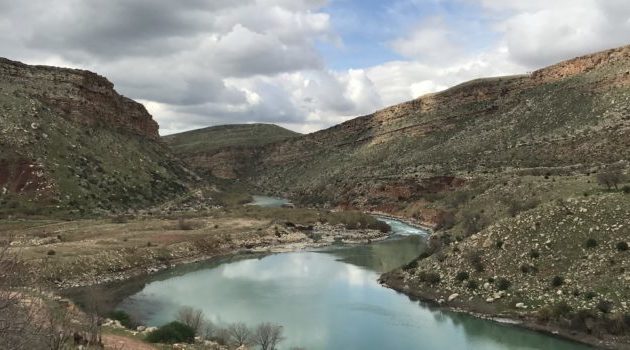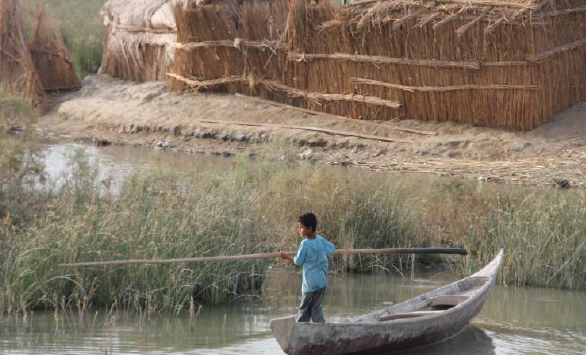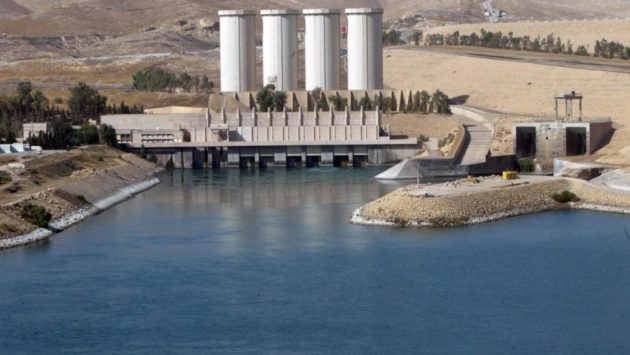Iraq and the Convention on the Law of the Non-navigational Uses of International Watercourses of 1997
Ismaeel Dawood
Introduction
To change the position of Iraqi authorities on the issue of shared water resources from non-commitment to solid defense on the basis of international law is a process that still needs a very long time. However, positive developments are currently taken place.
The article published in March 2017 about the comments of the Iraqi Minister of Water Resources on Ilisu Dam[1] have indicued an unprecedented debate, especially among young people who have taken an interest in this subject and a number of relevant policymakers and experts, including the Minister himself.
On Facebook in the comments section, an important question was raised by a colleague who asked: “Why did the article refer to international custom law but not to the 1997 Convention on the Law of the Non-Navigational Uses of International Watercourses? Is it because this convention is less important or is it not as relevant for the Iraqi position?”
In the momentum of young Iraqis interest in this topic, I have decided to contribute to the debate by providing a brief study of this convention.

The Importance of the 1997 Convention
Today, an old statement from an Iraqi politician came to my mind, when he said that Iraq’s rivers would be “saved” with the entry into force of the 1997 convention. I wonder what this politician would say today. It has been almost three years since the convention came into force.
However today the question is whether the 1997 Convention is important at all and how Iraq can benefit from it?
To answer this question, we should go back to the basics of international law and the beginning of this agreement. International law in general uses different sources, and most notably are the following four[2]:
- International agreements, which usually establish rules recognized by two or more States that may be specific to a particular topic or within a general framework,
- International customs, evidence of a general practice accepted as law;
- General principles of law as recognized by civilized nations, even if they are not written;
- Judicial decisions and teachings of highly qualified experts of various nations, as subsidiary means for the determination of rules of law.
International law on the use freshwater resources uses these sources. For a long time, fresh water has been the only major natural resource that is not governed by a specific international convention, and therefore has been generally dependent on international custom[3].
The United Nations has codified the most important rules and customs governing international fresh watercourses such as rivers, lakes, groundwater and others.
In the 1970s the United Nations commissioned the International Law Commission to study and codify the rules and laws governing international relations with regards to international non-navigational watercourses[4].This committee had to study a legacy dating back to 1814; more than 145 relevant international conventions[5], in addition to the rules and principles contained in international declarations and resolutions issued by specialized institutes such as the Institute of International Law and the International Law Association, such as the Helsinki Rules on the Uses of the Waters of International Rivers from 1966 for example.
The most difficult task of the International Law Commission was to codify this legacy in an acceptable document to be an international reference convention on this topic. The process of debate and codification was a strenuous process which lasted for twenty years, until the presentation of the Convention on the Law of the Non-navigational Uses of International Watercourses to the General Assembly of the United Nations and its adoption on May 21, 1997.
But, does the importance of the Convention come only from the great 20-year effort made to reach it, or from being the first of its kind? If we were asked to list the five reasons for the importance of this convention, what would these be? In fact, the goal of this article is to present the following points to underscore the key role this document can play.
- This Convention is a codification of the rules of international law and international norms governing the use of international watercourses. These rules have not been independently developed but have been codified, regulated and harmonized from what was already available in international law[6], and was developed into a framework agreement that sets out the general principles (not details) on the management of joint international watercourses.
- It is a specific international agreement, not an agreement between specific states. Instead the agreement governs all international watercourses throughout the world, and thus is the closest to the universality of human rights conventions and treaties. For example, women’s rights are found in the Convention on the Elimination of All Forms of Discrimination against Women, and even if a State does not ratify that Convention, it cannot avoid the effects of this Convention in any case and all countries have an interest in respecting this convention. In other words, in the event of a breach by a member state, this would be detrimental to the interests of other members in general. I would like to add that the member states of the Convention have a great interest in avoiding any violation of the agreement by any party, even if it is not a member of the agreement as is the case with Turkey and Iran.
- This Convention is the first of its kind and is today the international reference on the issue of international non-navigational waters, and represents international custom prevailing in this field.
- Iraq has been a member of this convention since 2001, and it states its accession to this agreement for the following reasons: “because this Convention is one of the most important works of the United Nations in the field of international rivers, and because accession to this agreement guarantees Iraq’s water rights in the common rivers”[7]. Syria, the second river state in the Tigris and Euphrates rivers is also member of this agreement[8].
- This convention is the result of a long debate between countries and was voted on only after reaching a text that could be accepted by a vast majority of the countries of the world, including major countries. When the convention was presented to the UN General Assembly in 1997, a hundred and three countries, including major ones, voted in favor while only three countries (Turkey, China and Burundi) voted against. Twenty-seven countries abstained[9].
For all of the above, it was agreed that the Convention would be adopted in six approved and equally authentic languages as mentioned in Article 37; these languages were English, Spanish, Chinese, Russian, Arabic and French.
It was also agreed that the Convention would have a condition for its effective entry into force. This requirement was determined by article 36 entitled “Start of Depletion” of the Convention, stating that the Convention enters into force only 90 days after the accession of 35 states. Ratification, acceptance, approval or accession does not coincide with voting for the Convention, which we concluded in 1997[10].States wishing to accede have to sign, ratify and submit the ratification to the Secretary-General of the United Nations[11], so as to be directly bound by the provisions of this Convention. This requires time, as well as the necessary conviction of States that they wish to place themselves under the authority of this Convention and to be bound by it. This has delayed the entry into force of the Convention for many years: a period of nearly 17 years added to the 20 years of the process of writing this Convention.
During this period international organizations advocated for countries to ratify the Convention, the most important of which was the World Wide Fund for Nature (WWF)[12]. Some countries carried out diplomatic efforts to persuade other countries to join to reach the required accession of 35 states.
Dr. Salman Mohammed Ahmed[13] informed me that the advocacy of experts, activists and international organizations promoting this agreement played a decisive role in the accession of most countries and thus the entry into force of the Convention. This demonstrates, even in the case of Iraq, that indirectly states are not the only ones involved in the protection of shared rivers and international waterways, and a long struggle will bring results, even after a long time.
Only on 19 May 2014 was the required accession of 35 completed, including major countries such as Britain, France, Germany, Italy, Spain, etc.[14]. On 17 August 2014, ninety days after the thirty-fifth accession (by the Vietnamese), the agreement entered into force. Since then international watercourses have had a Convention to govern their use, management and protection[15].
To be continued…
ملاحظة: النص الاصلي مكتوب باللغة العربية
Those who wish to comment or have further inquiries can reach the writer at ismaeel.dawood@gmail.com
[1] For the article on the comment of the Iraqi Minister of Water Resources on Ilisu Dam: http://www.iraqicivilsociety.org/archives/6835
[2] See paragraph 38 of the Statute of the International Court of Justice http://www.icj-cij.org/documents/index.php?p1=4&p2=2&p3=0
[3] Dr. Salman M. A. Salman from Sudan is the Editor-in-Chief of Brill Research Perspectives, International Water Law; a fellow in the International Water Resources Association (IWRA), and an academic researcher and consultant on water law and policy, see: http://www.salmanmasalman.org
[4] UN General Assembly Resolution 2669 (XXV), entitled “Progressive development and codification of the rules of international law relating to international watercourses”, 8 December 1970.
[5] Transboundary water management, Prof. Dr. Jan Leentvaar, UNESCO-IHE.
[6] See the extent to which the Convention embodies customary international law, Stephen McCaffrey, International Watercourses, Technical Study No. 414, World Bank, 1999, p. 36
[7] See Law 39 of the Republic of Iraq Act 2001
[8] See the list of member states of the Convention until the publication of this article
[9] UN General Assembly Resolution A/RES/51/229 of 8 July 1997
[10] To those wishing to know more about the difference between the adoption of an agreement and the signing and the accession or ratification, you can return to the Vienna Convention on the Law of Treaties of 1969
[11] Article 35 of the Convention
[12] The website of the advocacy campaign for this Convention is still available here: http://www.unwatercoursesconvention.org
[13] Dr. Salman M. A. Salman from Sudan is the Editor-in-Chief of Brill Research Perspectives, International Water Law; a fellow in the International Water Resources Association (IWRA), and an academic researcher and consultant on water law and policy, see: http://www.salmanmasalman.org
[14] Information here may change over time and other countries may join. See the table on the number of acceding or signed countries available here: https://treaties.un.org/pages/ViewDetails.aspx?src=TREATY&mtdsg_no=XXVII-12&chapter=27&clang=_en
[15] Dr. Salman M. A. Salman from Sudan is the Editor-in-Chief of Brill Research Perspectives, International Water Law; a fellow in the International Water Resources Association (IWRA), and an academic researcher and consultant on water law and policy, see: http://www.salmanmasalman.org.




